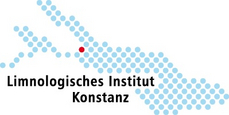R3 – Responses to biotic and abiotic changes, Resilience and Reversibility of lake ecosystems
(H. Hofmann and F. Peeters)
The project will assess the consequences of gradients in nutrient concentrations and of trophic change (oligotrophic to eutrophic and back to oligotrophic) for the spatial distribution of phytoplankton functional groups and abundance under consideration of lake hydrodynamics. This way, the project will add a spatial understanding, identify key processes structuring the phytoplankton distribution, and response patterns during trophic perturbations. The doctoral researches will conduct simulations with a coupled 3D hydrodynamic and aquatic ecosystem model in LLC which is subdivided into three basins with different histories of nutrient loading. The model approaches will be combined with pigment analysis on spatially resolved sediment cores (long-term change in phytoplankton pigment diversity and abundance) and water samples (seasonal change) as well as with data obtained from seasonal resolved field surveys and long-term monitoring programs from all three sub-basins of LLC providing information on the present and past occurrence, relative abundance, and distribution of phytoplankton and macrophytes as well as information on abiotic parameters and other ecological state variables. This setup will be used to test the following hypothesis: 1) Phytoplankton resilience is maintained by changes in diversity of phytoplankton expressed in changes in pigment diversity and possibly changing overall resource use efficiency – pigment diversity is higher under oligotrophic compared to eutrophic conditions; 2) The pattern of the spatial distribution of summer phytoplankton between sub-basins of LLC depends on the nutrient load in the inflows rather than on the trophic state thus leading to a resilience of the spatial patterns during eutrophication and oligotrophication, respectively; 3) The spatiotemporal differences in phytoplankton communities between lake sub-basins may however be sensitive to the trophic state, because changes in the composition of the macrophyte community growing on the sill between the basins (e.g. between Gnadensee and Zellersee) reduce the horizontal exchange across the sill and thus alter inter-basin mixing of nutrients. The growth of macrophyte Potamogeton, favoured under eutrophic conditions, causes large hydraulic resistance that may essentially disconnect Gnadensee from Zellersee, and thus result in an alternate state compared to oligotrophic conditions; 4) Changes in the macrophyte community may also lead to resilience in the summer phytoplankton biomass with respect to trophic state, i.e. during eutrophic conditions Potamogenton outcompetes Characeens and produces increased macrophyte biomass which leads to a reduction of nutrient and light availability for the growth of phytoplankton especially in the littoral zones. During oligotrophic conditions this relationship is reversed.
The numerical-model based studies conducted in B1 and A4 have similar demands on model parametrization and profit from the exchange and comparison of model results on phytoplankton dynamics using a 1D or 3D approach. Projects A5 and A4 cross-fertilize in the analysis of the long-term monitoring data of phytoplankton and macrophytes in LLC. The projects A1, B2, and C3 profit from jointly conducted sampling, dating, and the analysis of sediment cores. The temporal change in phytoplankton biomass and pigment dynamics during trophic change will be set in relation to the diversity dynamics of phytoplankton investigated in A1. Seasonally resolved data on phytoplankton community composition (from routine sampling) and pigments (from sediment traps) can be used as reference for the metagenomics analysis in A2.
Funding: DFG
Period: 2017/04/01 to 2021/03/31

